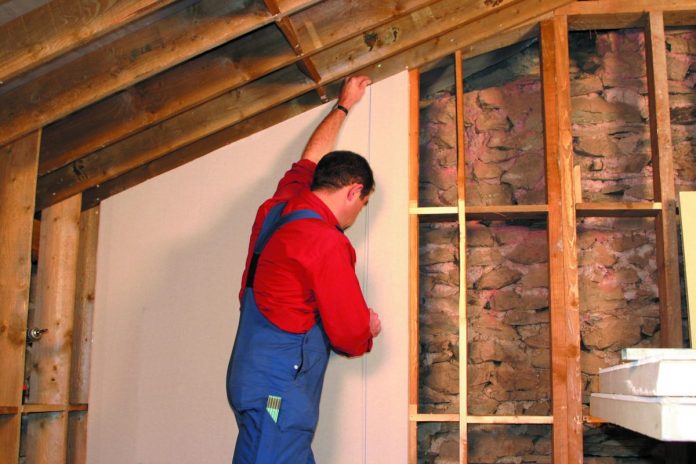A host of government initiatives have failed to persuade householders to implement energy efficient behaviour. Simon Storer, Chief Executive of BRUFMA, examines how we break through this engagement barrier
The perennial problem of how to persuade and encourage consumers to change their behaviour to have more energy efficient houses and reduce energy consumption is one that has engaged the industry and government for far too long. Many a policy has floundered on the rocks of inaction, apathy and distrust as we have been unable to convince householders, en masse, of the benefits of improving their homes, enhancing their living conditions and ‘doing their bit’ for the planet and for future generations.
The arguments have been made time and again, but so many energy efficiency schemes have failed to gain traction or ignite any sort of desire to act, except for a relatively small coterie of enthusiasts who didn’t need much persuading in the first place.
There are still 21m out of a total of 26m households in the UK with a poor level of energy efficiency and in a recent report from the Association for the Conservation of Energy, the UK languished at the bottom of a list of 16 assessed countries as having the highest rates of fuel poverty and one of the most inefficient housing stocks in Europe. We truly are ‘the cold man of Europe’.
What a disgrace and what an appalling indictment of our inability to implement a system to make housing not only comfortable and healthy for the sake of the residents but also energy efficient and sustainable for the sake of the wider environment and for future generations.
One assumes that at some point in the not-too-distant future, we must progress from the rhetoric and tired clichés that ministers constantly spout about the importance of energy efficient behaviour to actually implementing improvements across the built environment.
If the government wants to achieve its daunting 80% reduction in carbon emissions by 2050 then it won’t be achieved solely by building zero carbon homes. As we all know, the largest contributor to carbon emissions is existing buildings, so until ministers introduce policies that truly motivate and engage the public to reduce CO2 in existing housing, the government has little hope of achieving its ambitious target.
There is currently a plethora of energy efficiency proposals on the table, outlining ideas of what could or should be done, with more reports expected to follow soon, with yet more ideas. None are particularly revolutionary. In fact, most of the ideas and suggestions have been around for many years but, despairingly, government has constantly failed to give the necessary support to make changes happen on a large scale.
The leader of the pack for the moment is the Each Home Counts report, which is looking at all aspects of refurbishment and has a good chance to make a difference. However, this will only succeed if politicians play their part by making legislative and financial changes to support the policies outlined in the report.
So how do you incentivise homeowners? The insulation industry has for a long time been encouraging the use of financial levers to help homeowners make decisions to invest in energy efficiency improvements; for instance, focusing on measures to use stamp duty or council tax as an incentive. If the Energy Performance Certificate (EPC) of a home was linked to its level of council tax, the better the energy performance of the lower council tax banding then any improvement in energy efficiency could not only result in lower fuel bills but also reduce the council tax rating. And as an additional bonus, when it came to selling a home, a better EPC rating would have a positive impact on the resale value.
Customer engagement
With consumers seemingly less attracted to saving small amounts of money on their fuel bills, the motivation must be about encouraging them to improve their homes to make them a more comfortable place in which to live. A home with good, correctly installed insulation will simply be warmer in winter and cooler in summer and must be the first step on the ladder of energy performance improvement.
So, how do you motivate people from able to pay, to willing to pay? Inform, educate, identify actions, deliver results as promised, provide reassurance and correct any failings in the process.
We must offer quality retrofits for all consumers so they understand what needs to be done, what benefits this will deliver, how it will be achieved and be given the confidence that any, and all, failings will be corrected and the whole project signed-off with a valid and recognised certificate of competence, or similar.
By rolling all elements into one project – enhancing energy efficiency, improving the EPC, increasing home comfort, adding property value and reducing council tax and/or stamp duty – we are more likely to engage the consumer and achieve the results needed.
A perfect world
The challenge with existing buildings is first assessing the work required, which places huge importance on the upfront assessment of a building. It is therefore imperative that professional assessors are first employed to outline all appropriate energy improvement measures.
Once this is established and an agreed and costed programme of work is produced, the onus then falls on all those on site to meet a comprehensive set of standards, which meet building regulations, product specification and manufacturers’ guidance and guarantees. Far too often corners are cut, rules are massaged and delivered performance falls very short of promised performance.
However, when it works and all the elements come together, including a motivated customer, we will then have the chance to create a perfect world of retrofitting – but the consumer must have a retrofit that works.
Ultimately, we need a change in mind-set from the government to the consumer, including in the construction industry, if we are to make a major dent in our shockingly poor housing stock.
In 2017 to have cold, inefficient, leaky houses with many people living in fuel poverty is unacceptable and yet that is the reality we face. The means of improvement are available – good insulation, better windows and doors, reducing energy usage, cutting bills, reducing CO2, improving our health – what’s not to like?
Government must stop sitting on its hands and give the support to make these improvements happen. Set targets, provide legislation and regulation, create the financial frameworks and let’s get on with doing what is rapidly becoming a national imperative.
Simon Storer
Chief Executive
BRUFMA
Tel: +44 (0)161 672 7387
Twitter: @BRUFMA














